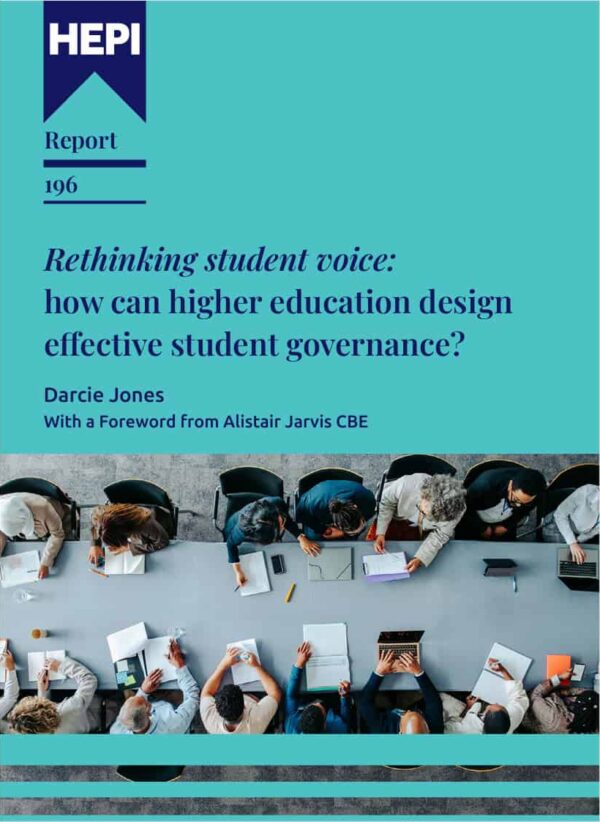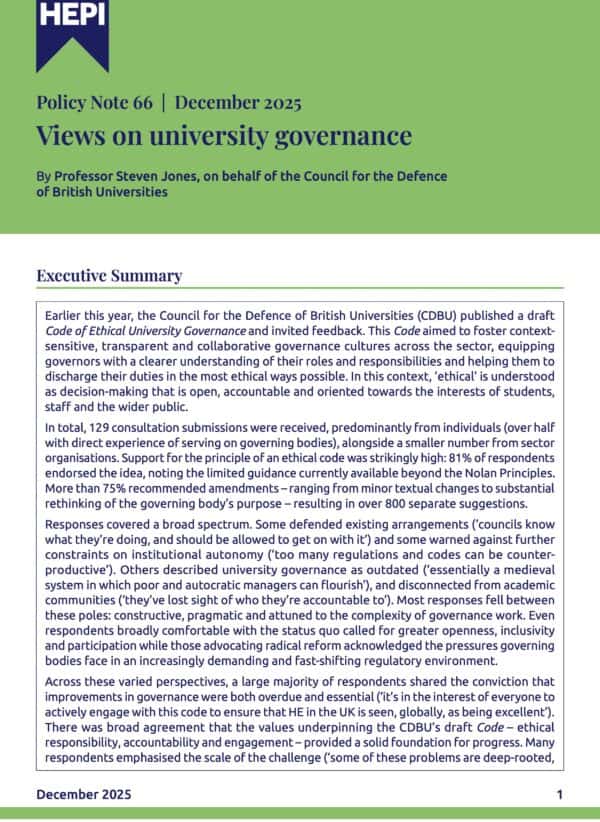Specialist arts institutions are not a luxury; they are the crucibles of Britain’s creative future
This blog was kindly authored by Professor Randall S Whittaker Principal and CEO Rose Bruford College.
London’s creative industries are not a cultural accessory; they are an economic engine. Around one in seven jobs in the capital sits within the creative industries, and if you include creative roles embedded across other sectors, that figure rises to nearly one in five. Almost a third of all UK creative businesses are based in London.
The UK’s creative success is no accident. It rests on a delicate, interdependent education ecosystem: specialist arts institutions; research hubs; and universities that together generate not only talent but innovation, identity and national soft power.
That ecosystem is under pressure. Rising costs, uneven funding, and the new fashion for mergers, the proposed “super university” being the latest example, are driving a wave of consolidation.
Why “super universities” miss the point
When two generalist universities merge, their academic portfolios may blend. When a small, practice-led arts institution is absorbed, it rarely blends; it dissolves. Studios become seminar rooms. Ensemble training becomes optional. Niche disciplines disappear in the name of efficiency. Scale rewards the generic; creativity thrives in the specific.
The Kent–Greenwich merger, planned for 2026, is being hailed as a pragmatic response to sector-wide financial stress. On paper, such consolidations look neat: shared back-office functions, pooled estates, a single regional brand. But higher education is not a spreadsheet exercise.
It’s understandable that, given Rose Bruford College’s geography — located between Kent and Greenwich — and a financial position that has been challenging but is now improving, some might assume that joining a “super university” is the logical next step.
Yet that assumption misunderstands what specialist colleges contribute. Rose Bruford’s strength lies precisely in what cannot be merged: its scale, its agility, its ensemble ethos, its craft-specific research culture, and its proven industry connectivity. The College’s recovery — from stabilised finances to a UKRI-funded research project and multiple national awards for both performance and technical excellence — shows that independence is not indulgence; it is impact.
The question is not whether Bruford can survive outside the merger, but whether the creative industries can afford to lose what institutions like Bruford uniquely provide. When specialist institutions disappear, we do not gain efficiency; we lose an entire mode of creativity.
There are, of course, examples where partnership has protected identity: the Royal Birmingham Conservatoire operates as an associate faculty of Birmingham City University, retaining its governance and character while sharing infrastructure. That balance, autonomy with alignment, is the exception not the rule. For most specialist creative institutions, a merger could mean absorption, not collaboration.
From curtain call to crucible
It remains true that it is a curtain call for the old, exclusionary model of time-intensive training that shuts out those without privilege or flexibility.
What must be defended now is the right of specialist institutions to re-imagine rigorous training on equitable, sustainable terms.
Specialist creative higher education is not a conveyor belt. It is a crucible.
To mistake it for a “skills pipeline” is to misunderstand its purpose. Specialist higher education institutions are not service departments for the creative industries; they are cultural forces — sites of disruption, experimentation and social imagination.
Graduates from these environments do not merely enter the creative industries; they redefine them. They found new companies, invent formats, challenge hierarchies, and expand who gets to tell Britain’s stories.
Research, re-imagined
Specialist arts institutions do not reject research; they redefine it. Practice is their laboratory. Performance, design and experimentation are their methodologies. Rose Bruford’s recently UKRI-funded research project exemplifies how specialist providers drive national innovation, producing knowledge that moves from rehearsal rooms to public discourse, from artistic experiment to policy impact.
The power of the specific
The reach of this work is visible every night on screens and stages.
- Jessica Gunning, BAFTA, Emmy and Golden Globe winner for Baby Reindeer, trained at Rose Bruford.
- Bernardine Evaristo, Bruford alumna and Booker Prize winner, saw her novel Mr Loverman adapted for television and a Women’s Prize Outstanding Contribution Award, recognising her “transformative impact on literature and her unwavering dedication to uplifting under-represented voices”.
- Stephen Graham and Hannah Walters, who met as Bruford students, co-starred in Adolescence — proof that specialist institutions forge lifelong creative partnerships.
- Sir Gary Oldman, Slow Horses, began his journey at Bruford and continues to define British performance worldwide.
Excellence extends far beyond the spotlight. At the Profile Awards, lighting design alumni Jessica Hung Han Yun, Sarah Readman, and Joshua Pharo, together with Joshie Harriette, all received national recognition. Hung Han Yun — also an Olivier Award winner for My Neighbour Totoro — shows how specialist training produces innovators whose artistry is both technical and conceptual. These achievements prove that excellence in production crafts is not ancillary to the arts; it is integral to Britain’s creative leadership.
Diversity and student choice
A healthy higher-education system depends on difference, in mission, in method, in who it serves.
If independent specialist higher education institutions disappear, the UK’s higher-education landscape flattens. The sector loses, not only training for performers and designers, but the pedagogical diversity that keeps higher education alive, the alternative modes of learning that reach students who may not thrive in traditional university structures.
For students, the consequences are immediate. Choice collapses from a landscape of craft pathways to a handful of broad “creative-arts” degrees. The student who might have trained as a lighting designer, scenographer or community-theatre facilitator is left with a single, generic option. In a system obsessed with “student choice”, consolidation removes the very choices that matter most — about identity, craft and form.
GuildHE’s recent Championing a Diverse Higher Education Sector manifesto underscores this point. It highlights the extra costs of small-class teaching and industry-standard facilities that specialist colleges cannot cross-subsidise, and calls for direct funding, reform of research and knowledge-exchange thresholds, and capital investment to secure the sector’s future. These are not indulgences; they are the practical conditions for diversity itself.
Funding reform is an investment in inclusion
What specialist institutions seek is not indulgence — and not simply more money to do the same thing. They seek resources that enable transformation: sustainable workloads, flexible modules, hybrid teaching, and equitable access, without sacrificing rigour.
As GuildHE notes, funding architecture must recognise that small specialist colleges cannot offset studio-based costs in the way comprehensive universities can. Reforming those systems is how government can genuinely champion diversity rather than merely declare it.
Starving specialist institutions into mergers is not efficiency; it is slow erasure.
A national imperative
Britain’s creative industries are a cornerstone of the economy and of international reputation. Yet the institutions that make that possible are treated as optional extras.
If independent, practice-led institutions vanish, we lose not only talent pipelines but the laboratories of imagination, the incubators of diversity, and the ability to renew what British creativity means.
Specialist creative institutions are not relics of the past. They are the crucibles of the future — where risk is rehearsed, difference made visible, and new worlds imagined into being. Fold them into super universities, and the loss will not be obvious at first.
But over time, our screens, our stages and our stories will all start to look the same. And by then, it will be too late.







Comments
Douglas Robertson says:
I agree with the general thrust of this article. I do not know the institution but I do know that there is not a single definition of excellence it is multi-dimensional. I would agree that the creative industries are always a poor cousin to science and technology. Thirty or maybe forty years ago I could imagine that an art and craft college would have survived merger into a large university in the UK. Universities four decades ago were more like a collection of small enterprises (academic schools) under one overall governance structure. Universities thrived on diversity. Now I agree an art college would disappear without trace. Universities have corporatised. Research excellence has been defined by a single perspective through the REF. The Arts and Crafts have been strangled. The UK and others have failed to protect the breadth of tertiary education. The humanities have also suffered. We have lost our way in a world defined simply by accountants. The solution may lie elsewhere. To keep the money grubbers and bean counters happy we need a new style of super creative institution run more as a cooperative of small entities sharing costs but not losing identity. Departments which struggle in existing universities should be freed to join such cooperatives. Creative subjects and the arts and craft movements would retain their vitality. The world would be a better place and the creative industries would not be deprived of oxygen.
Reply
Jonathan Alltimes says:
What is the likely financial pathway for the sustaining Bruford College as a going concerm over the next year, the next four years, and the next 20-30 years? The argument of the Principal and CEO is a set of promises can be kept about the future financial viability of the College, not from argument about the past financial performance, but about the cultural and economic need for subsidising academic institutions of a certain specialist character. Who will pay over next 20-30 years is not addressed in the argument,: the typical design life for capital reinvestment. It may be the College can raise endowments. I assume the argument is addressed to the OfS. The premise of the argument is the economic conditions of the creative industries. The economic facts of the creative industries are low wages, unstable employment, a crisis in TV production, the demise of BBC production, the demise of the British film industry, and production dominated by the American streaming services. Music production and marketing is dominated by an oligopoly, as can be seen in the tastes and consumption of music. The use of creative output by AI is unregulated, in particular publications.
Reply
Add comment